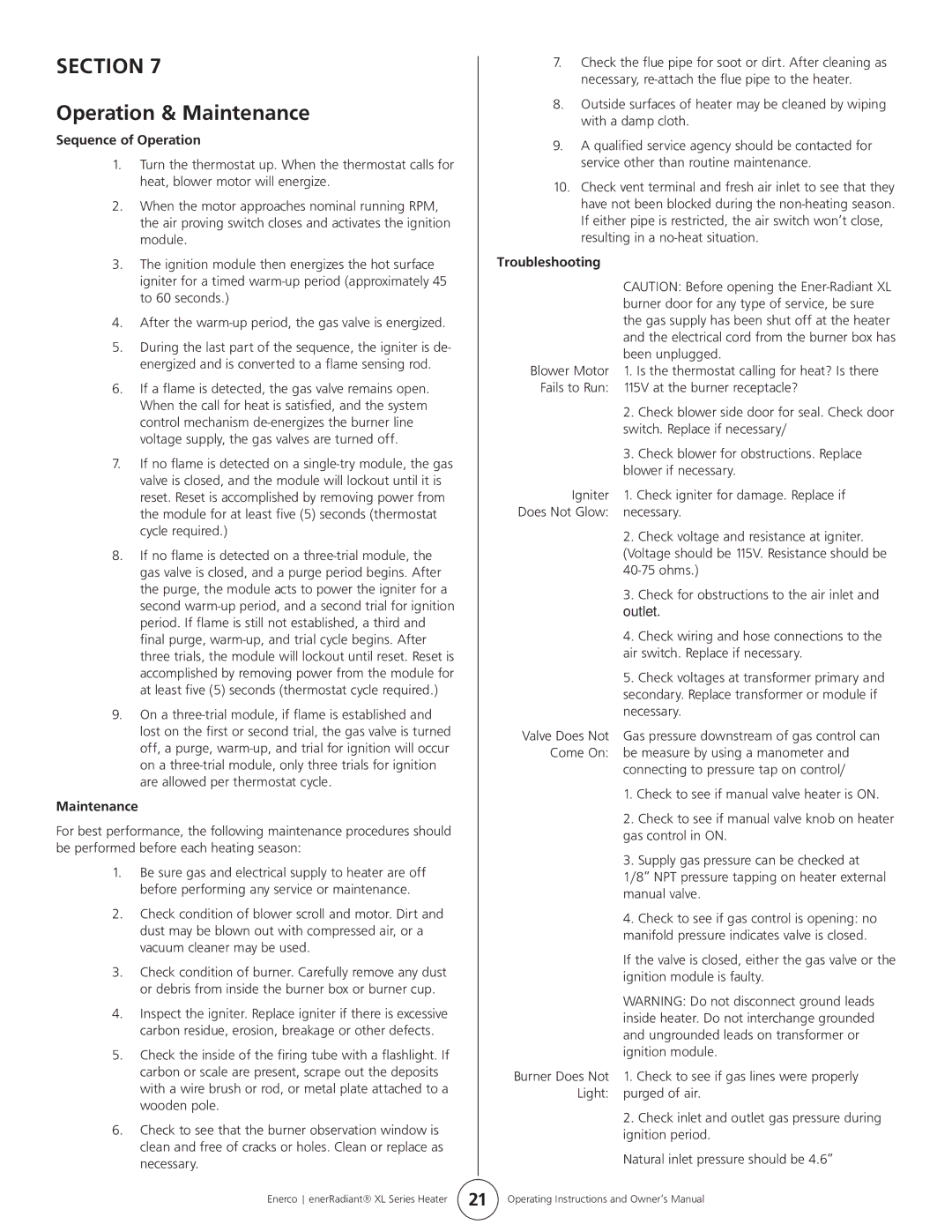ERXL-125S, ERXL-100S, ERXL-150L, ERXL-60, ERXL-175 specifications
Enerco has made significant advancements in heating solutions with its lineup of powerful and efficient models: the ERXL-175L, ERXL-80, ERXL-125, ERXL-80S, and ERXL-100. Each model offers unique features tailored to various heating requirements while ensuring reliability and performance.The ERXL-175L stands out as a high-capacity unit designed for larger spaces. With an impressive output of 175,000 BTUs, it is perfect for industrial applications or large workshops. This model is equipped with a robust heating element that provides quick and efficient heat distribution. Its built-in safety features, including overheat protection and flame failure detection, ensure safe operation even in demanding conditions.
The ERXL-80 is a mid-range model with an output of 80,000 BTUs, making it ideal for medium-sized spaces like garages and smaller warehouses. This unit features advanced electronic ignition and adjustable thermostat control, allowing users to easily customize heating levels based on specific needs. Additionally, its lightweight design facilitates easy installation and portability.
For those needing slightly more power, the ERXL-125 offers 125,000 BTUs of heating strength. This model combines efficiency with versatility. It features a durable, corrosion-resistant casing that enhances longevity, making it suitable for outdoor use. The ERXL-125 also includes a user-friendly control panel, offering intuitive operation for users of all experience levels.
The ERXL-80S is designed with mobility in mind. Similar in output to the ERXL-80, but with added features for dynamic heating solutions, this model is perfect for job sites where mobility is paramount. It boasts heavy-duty wheels for easy transportation and a robust heating mechanism suitable for both indoor and outdoor applications. The ERXL-80S also includes a protective grill to enhance safety during use.
Lastly, the ERXL-100 provides a balance between efficiency and power with an output of 100,000 BTUs. This model incorporates modern technology, such as an automatic ignition system and an energy-efficient combustion process, allowing for lower fuel consumption without sacrificing performance. Additionally, it features an ergonomic design that allows for hassle-free handling and maneuverability.
In summary, Enerco's ERXL series models, including the ERXL-175L, ERXL-80, ERXL-125, ERXL-80S, and ERXL-100, provide a range of heating solutions suited for various applications. Each unit features advanced technologies, safety mechanisms, and user-friendly designs that enhance operational efficiency and reliability, making them excellent choices for anyone in need of robust heating solutions.
